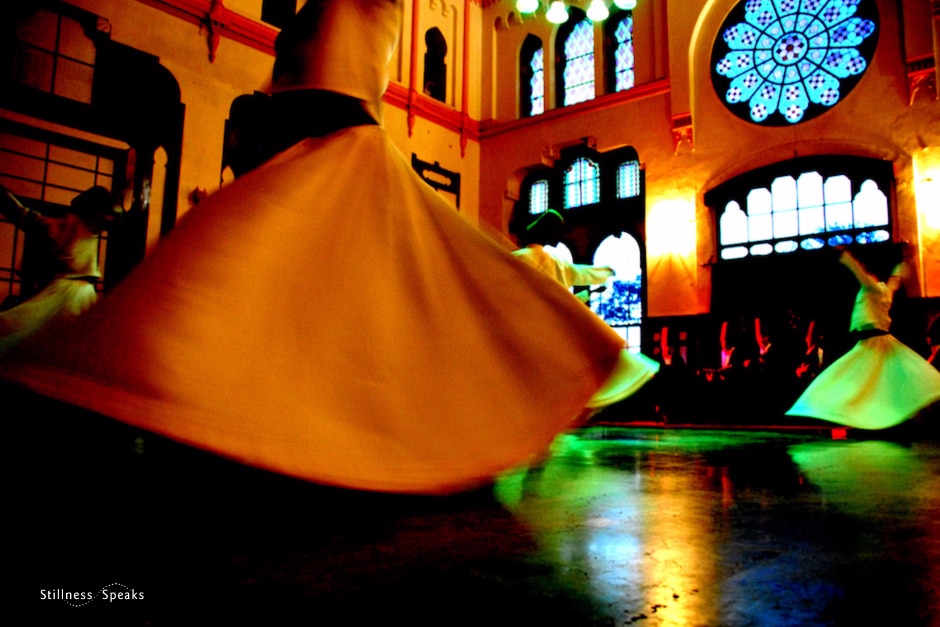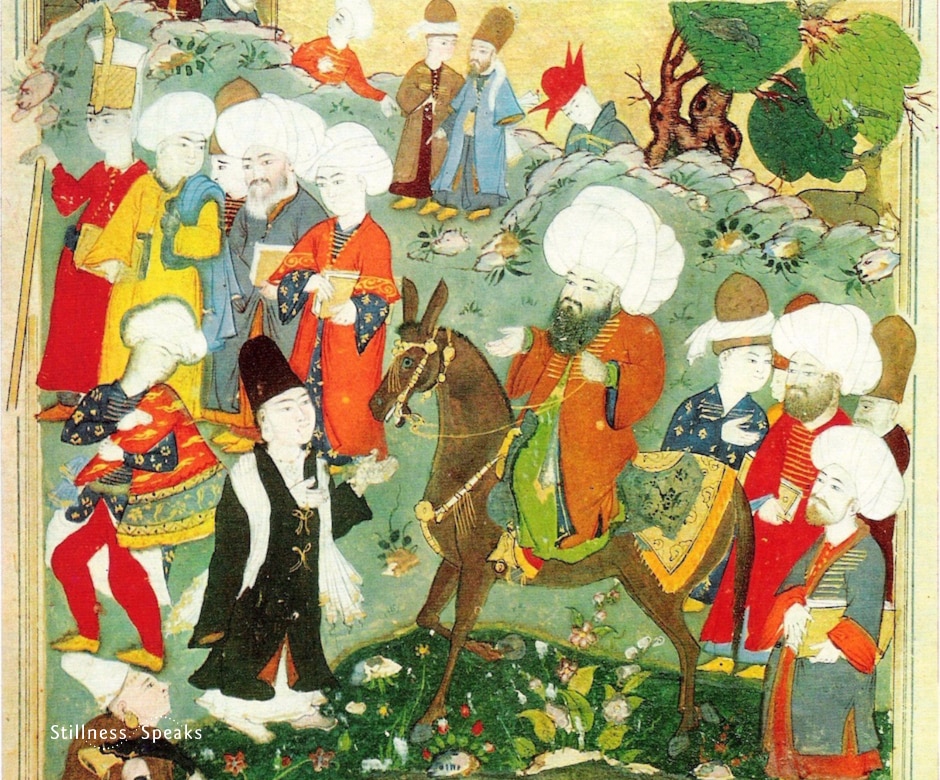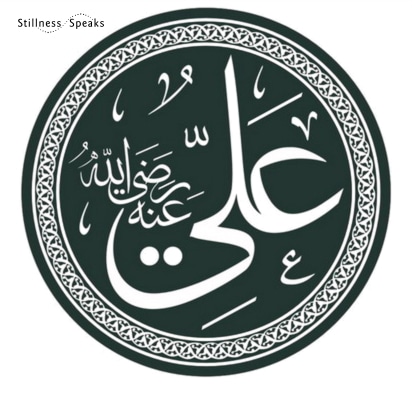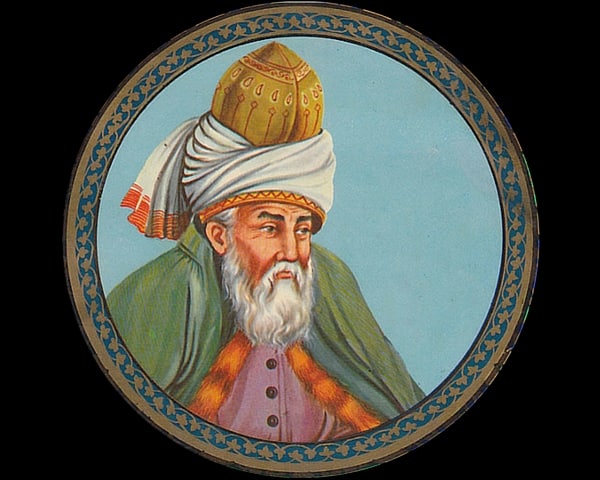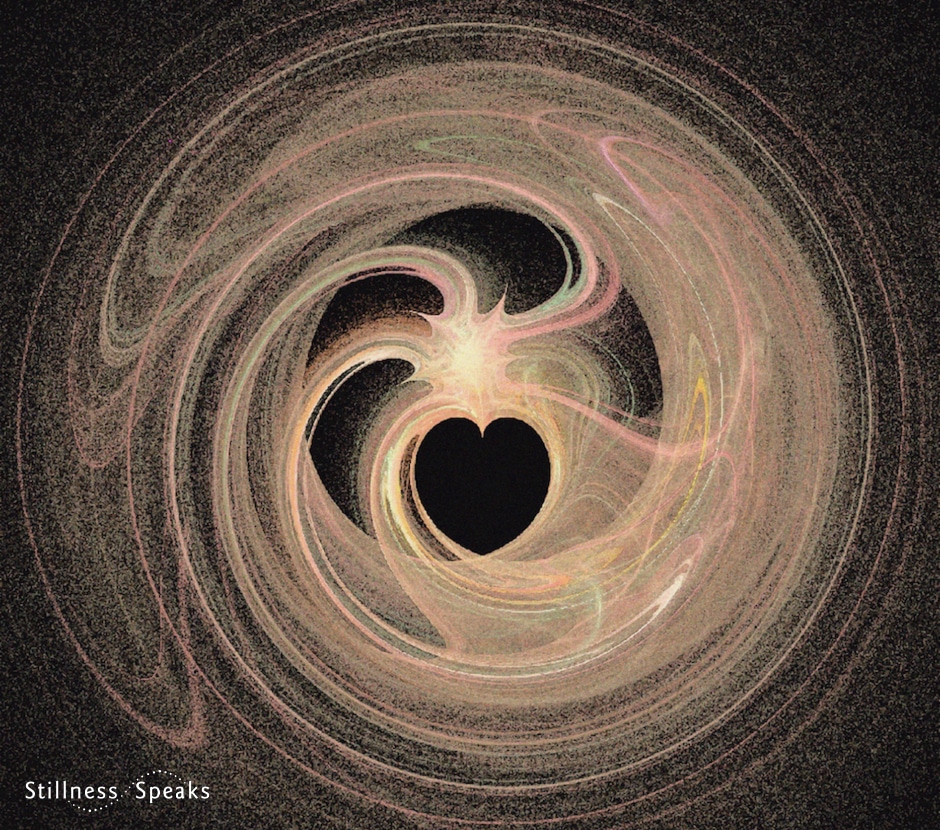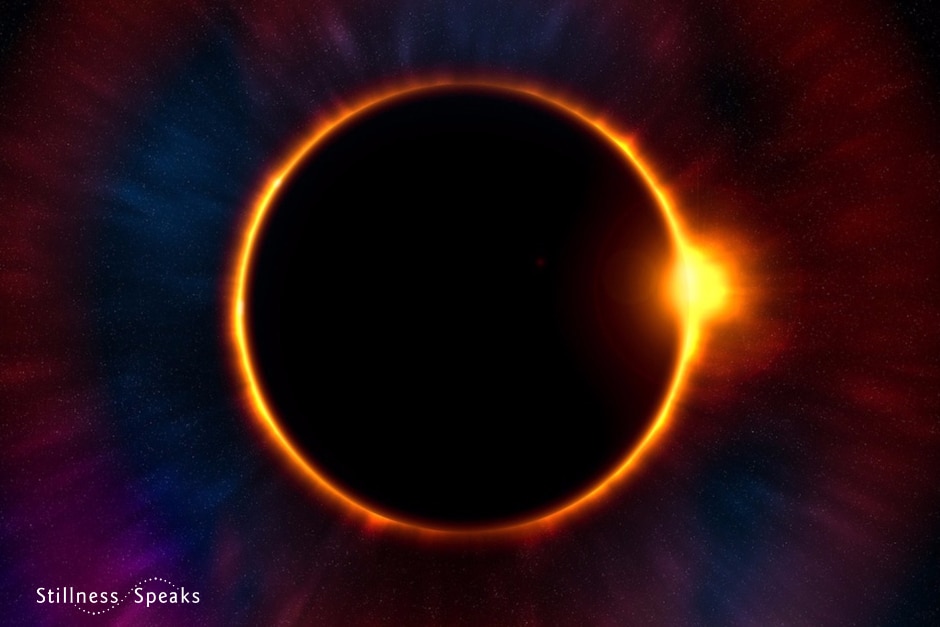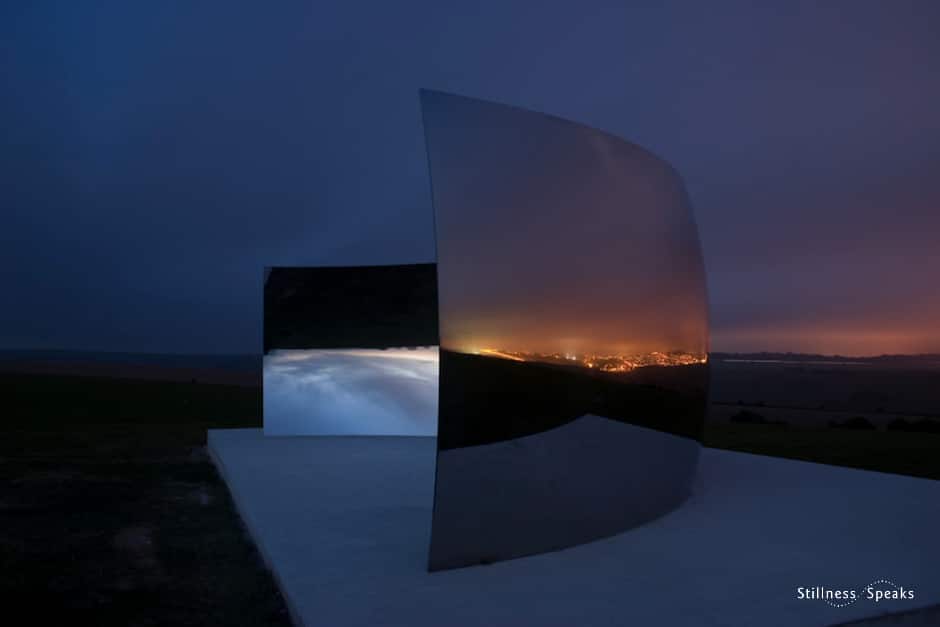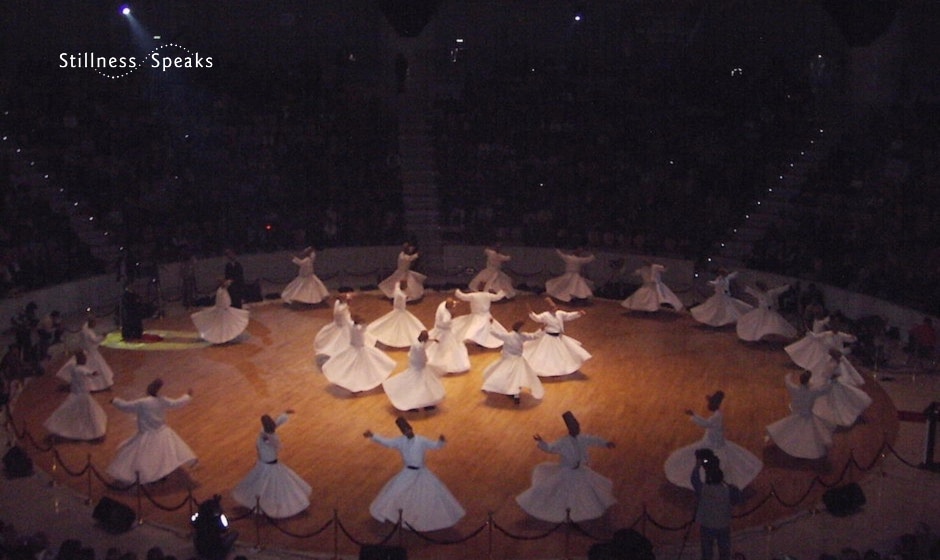In this Part 2, we continue the conversation between Paula Marvelly (the host) and Philip Jacobs (the guest-interviewee). Part 1 closed with Paula asking the question: Is the turning like meditation in that it builds up a residue of stillness?
Philip Jacobs: Yes, it builds up an accumulative energy. In Sanskrit, it’s called sattva, the energy of being, which gradually permeates you. With the dervishes, after a good mukabele, you have a beingness that is palpable afterwards for many days.
If you do it on a regular basis, it’s almost like the beingness becomes your background. It’s not really giving you anything new; rather, it is showing you what was there already but you were looking for something else.
PM: Could you speak about the relationship between Rumi and Shams of Tabriz, the maverick and mystical dervish. There’s that wonderful story about when they first met, Rumi was reading some books and Shams asked Rumi what he was doing, to which Rumi replied, ‘Nothing you would understand.’ Then Shams threw all his books into a well, then retrieved them and they were all dry. Rumi asked him what he was doing, to which Shams replied, ‘Nothing you would understand.’
Philip Jacobs: Rumi had been an academic philosopher and was ripe for meeting the great mystic, Shams of Tabriz. When they met, it was described as the meeting of two oceans, which is a metaphor I rather like. That’s when Rumi’s heart opened and he ‘found’ himself.
Shams was supposedly murdered by Rumi’s followers; Rumi became totally distraught and this is when all the poetry flowed out of him, in the Mathnavi and the Diwan-e Shams-e Tabrizi.
The actual teaching contained within them is identical to Advaita; it’s a nondual teaching with a very strong heart emphasis.
PM: So essentially, there is no difference between Advaita and Sufism.
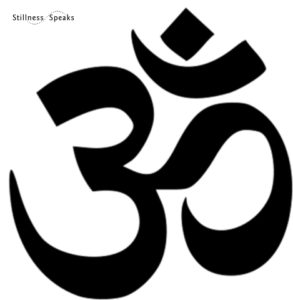
PM: Traditional Advaita people would say they are not the same!
Philip Jacobs: They are the same. They are ‘not two’. When I give talks, I slip in and out of Advaita metaphors and Rumi metaphors; they fit together so well and they are both saying exactly the same thing.
PM: Rumi has become over glamorized, I feel. Apparently, he is the most published poet in the West, outstripping any other poet, even Shakespeare. But his poetry is often used in a romantic context, when it’s not really talking about that at all.
Philip Jacobs: That’s right, it’s not. Coleman Barks, the American poet, does his own renditions of Rumi, which are absolutely beautiful but they are often little cross sections of Rumi’s work. He often absorbs a poem and then retells it in his own way. It’s his translations that have led to Rumi becoming the most popular poet.
In Persia, they absolutely adore Rumi. In the last couple of years, we have been attracting lots of Persians from the London Persian community; we have our own Farsi version of the Mathnavi group that meets at Colet House on Tuesdays. We also had a big Rumi celebration festival recently; we had poetry in the morning and then all afternoon, we had Persian musicians playing their music to drumming and turning.
Essentially, the teaching is that you have a temporal identity in time and then there is your inner identity, which is often referred to as the heart. At first, it appears that our heart is the still center inside of us; in the training, at first, what normally happens is that the pain body, as Eckhart Tolle refers to it, comes to the surface. You can see that; people start crying, get angry, and so on. That’s all fine, you just have to let that pass.
The pain body then starts to dissolve away, rather like sediment rising, and people start to access what they call the heart, the stillness, which lies behind the psyche and the thoughts and feelings. When that happens, people start to look visibly younger, they soften, and the falling in love process happens. That’s stage one.
Stage two is when you discover that the heart isn’t just inside you; everything you perceive is in the heart and you start noticing that everything you are experiencing and everything you are perceiving is actually taking place within this still center.
PM: I guess at a very basic level, that’s why people love going to a disco or night club or lounge bar because that kind of movement means you are effectively renouncing your mind.
Philip Jacobs: Yes. There are so many things that people do, like extreme sports, where you get taken to the edge of yourself, like mountaineering, for example, which is all about re-accessing this underlying stillness.
With the dervish ceremony, the whole of the teaching is symbolically embedded in the ceremony, so it’s like a metaphor. It’s very lovely.
In brief, the dervishes come in, bow into the room, which means letting go of the identity, ‘I am something’, reacting with a separate, external world. Then they listen to a song called a naat, which is about the prophet Mohammed and the Sufi tradition; then they listen to another song that is played on a reed flute, a ney, called a taksim, which is symbolic of the soul longing for its origins, the unity state.
After that, the dervishes all beat the floor simultaneously and that means wake up and be ‘kun’; so that’s like you have come out of an identity, which is the temporal self, and you’re just identifying with beingness. Then the Sheikh leads the dervishes on three processions around the room.
The first round of processing represents knowledge gained by reading, which means knowledge from books; the second round is knowledge gained from seeing; and the third round is knowledge gained from living in the reality that is this. So an analogy of this would be: the first round is reading about London; the second round is visiting London; and the third round is actually coming to live in London.
Then after the procession, the dervishes throw off their black cloaks under which they have long white robes, and they begin to turn out into the room. There are four salams or four periods of turning.
The first period is called sheriat, which means ‘on the skin’ and represents religion, ordinary conventional external religion, and is what in Islam they call sharia law. Just like in Christianity, for example, we have rules of conduct, virgin births and mythical things like that.
The second round of processing is called ‘finding the way’ or tariqat; in other words, starting on a path or a way. Once we get sick of the cycle of pleasure and pain, we start to look inside ourselves, in order to access the sense of presence behind the thoughts and feelings, and thus start learning a method like meditation or turning.
The third salam is called finding reality or haqiqat, also referred to as surrender or annihilation in the beloved. The third salam is a very long salam; because it is such a difficult technique, you realize that you can’t get through it on your own effort, so you have to give over and surrender.
There’s a wonderful poem by the American poet, Robert Bly:
We did not come to remain whole,
we came to lose our leaves,
like the trees, the trees that are broken,
and start again drawing up from the great roots.
During the third salam, your sense of separation gets burned in the fire and to survive, you have to let go and trust that you are going to be carried by something much larger than yourself.
In the fourth salam called marifa, which means ‘self knowledge’, the dervishes simply return to where they were at the end of the third salam and turn on one place. That’s called finding reality for and in oneself. The reason why a dervish no longer moves around the room is because they have realized that what they were looking for isn’t outside of them; it’s inside of them. So it’s realizing that there is nowhere else to search; that they are already it. The journey is over.
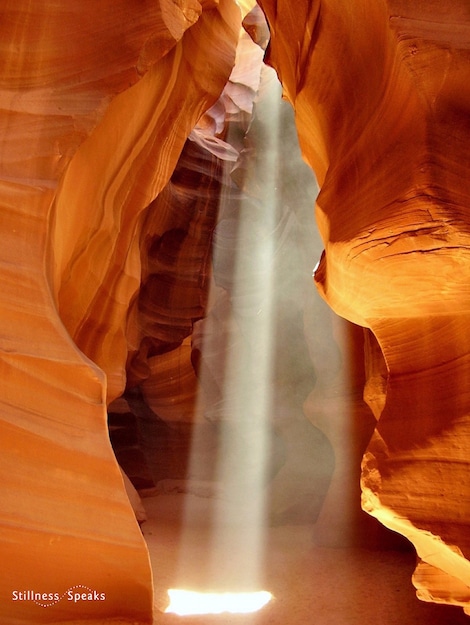
Then in the fourth salam, the Sheikh ceases to be the witness and comes out and turns into the center of the circle with the dervishes; this symbolizes the fact that the underlying stillness and the manifest universe are not two.
So not only is the universe a manifestation of consciousness, it is also the very substance of consciousness. The great stillness and the manifestation are one and the same thing.
So full nondualism is symbolized by the Sheikh coming out along with all the dervishes, turning on one place. When that ends, the dervishes have their robes put back on. There are more prayers and then everyone files back out again. So you go off back into life but with this great secret inside you.
PM: There’s a Bollywood film called Jodhaa Akbar about a Muslim king who marries a Hindu princess, which is loosely based on a true story. There’s a wonderful Sufi turning dance in the middle of the film, which is absolutely beautiful. The turning is hypnotic and sensual, without being too provocative or sexual. It couldn’t be more perfect.
Philip Jacobs: ‘It couldn’t be more perfect.’ That’s such a good explanation. The whole Sufi turning just can’t be added to. That’s why we are asked to preserve it and now I understand why.
— — —
This conversation continues in Part 3 … where Philip elaborates on nondualism … so, stay tuned.
Click here for Part 1.
— — —
Paula Marvelly is the Creator and Editor of The Culturium, a magnificent site about Art and Consciousness. Paula was also an ex Editor of Stillness Speaks.
For more information on the whirling dervishes, visit the Study Society website or The Whirling Dervishes of West London on facebook.
Images: (all edited and logo added) 1) let’s dance! by Tinou Bao, CC BY 2.0, 2) Folio from Jâmi al-Siyar by Mohammad Tahir Suhravardî, illustrating the meeting of Mavlana and Molla Shams al-Din in Konya by Unknown, Public Domain, US Public Domain Tag, 3) Om – தமிழ்: ஓம் படிமம் வெள்ளை நிறத்தில் by Jagdeeswaran, CC BY-SA 3.0, 4) The Winged Heart of Sufism by Frater5, CC BY-SA 3.0, 5) Ali Alahis Salam by Ibrahim ebi, CC BY-SA 3.0, 6) Rumi by Molavi, Public Domain, 7) Stardust: Valentine for the Universe by garlandcannon, CC BY-SA 2.0, 8) Sun Eclipse by intographics, CC0 Public Domain, 9) Japanese-Maple-Autumn by Martin, CC BY-SA 2.0,10) Antelope Canyon by skeeze, CC0 Public Domain.
